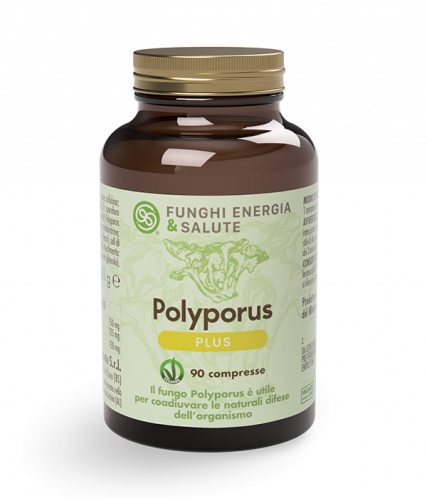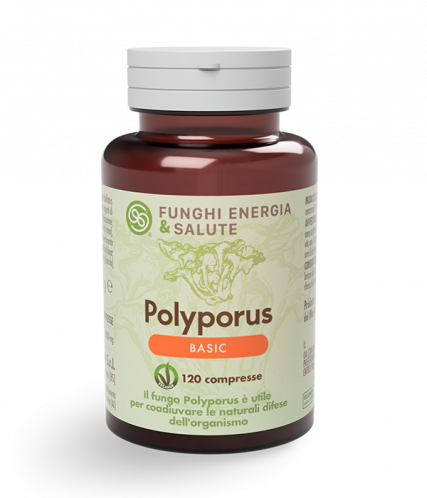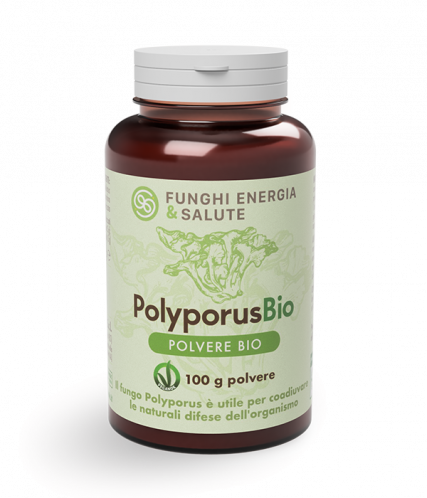Certified Natural products veganOK
030 9881073 Monday to Friday from 09:00 to 17:30
Toggle Nav 



Skip to Content
Language
EN
How can we help you?
Search
Subscribe to the Newsletter
to get immediately a discount code
on your first purchase
to get immediately a discount code
on your first purchase
Polyporus
- Home
- Polyporus
Polyporus
In modern times
Polyporus (Polyporus umbellatus) is a well-known diuretic; it eliminates excess sodium and liquids and lowers blood pressure only when it is too high. Many studies have shown that the hypotensive effect occurs gradually (Yuan et al., 2004; Zhang et al., 2010).
Other important studies have documented the beneficial effects of Polyporus on hair: it stops hair falling out, protects it from aging and promotes regrowth, thanks to two substances - the presence of Polyporusterones A and B fixes minerals, the substances that strengthen and encourage the growth of hair and at the same time makes the bones and fingernails stronger (Inaoka et al., 1994; Ishida et al., 1999).
Ancient tradition
Polyporus has been used for about 4000 years in Traditional Chinese Medicine and is appreciated, in particular, as a powerful natural diuretic, thanks to its ability to eliminate edema and water retention. These virtues are also described in the oldest Chinese manual of herbal medicine and nutrition “Shen Nong Ben Cao Jing” dating back to 2800 BC.
Over the last twenty years the benefits of this Medicinal Mushroom have been fully confirmed and made known thanks to scientific research.
Mycology
Polyporus (Polyporus umbellatus) is a lignicolous mushroom which grows on tree stumps, mainly of chestnut trees. It is composed of a white stem which forms a base for a large number of small elements (with a maximum diameter of 5 cm).
Brown in colour, it has a pleasant appearance and can reach a weight of several kilograms. It grows in Asia, Europe, North America: it can also be found in Italy.
Chemical compounds
In Polyporus there are several active ingredients, in particular:
- acquaporins AQP1, AQP2 and AQP3, three proteins that promote the elimination of excess water and sodium (Zhang et al., 2010);
- beta glucans 1-3 and 1-6, very rare in nature, and terpenoids (essential oils). Both perform an excellent natural immune-stimulating action, particularly useful in urinary tract, prostate and respiratory tract infections (Zhang et al., 1991; Li et al., 2000);
- steroids, like Polyporusterone A, B and Acetosyringone. These molecules stimulate hair regrowth (Inaoka et al., 1994; Ishida et al., 1999);
- mannitol, a powerful anti-bacterial active in the urinary system;
- ergon (derivative of vitamin D2), responsible for an excellent diuretic effect;
- ergosterol, pro Vitamina D2, which promotes mineralization in the hair and bones;
- minerals, such as potassium, calcium, and iron. It should be noted that it contains the ideal proportion between potassium and sodium (5 to 1);
- trace elements, such as manganese, copper and zinc.
Bibliography
- Inaoka Y, Shakuya A, Fukazawa H, Ishida H, Nukaya H, Tsuji K, Kuroda H, Okada M, Fukushima M, Kosuge T. (1994): “Studies on active substances in herbs used for hair treatment. I. Effects of herb extracts on hair growth and isolation of an active substance from Polyporus umbellatus F.” Chem Pharm Bull, 42(3): 530-3.
- Ishida H, Inaoka Y, Shibatani J, Fukushima M, Tsuji K. (1999): “Studies of the active substances in herbs used for hair treatment. II. Isolation of hair regrowth substances, acetosyringone and Polyporusterone A and B, from Polyporus umbellatus Fries.” Biol Pharm Bull, 22(11): 1189-92.
- Li JJ, Tu YY, Tong JZ, Wang PT. (2000): “Inhibitory activity of Dianthus superbus L. and 11 kinds of diuretic Traditional Chinese medicines for urogenital Chlamydia trachomatis in vitro.” Zhongguo Zhong Yao Za Zhi, 25(10): 628- 30.
- Yuan D, Mori J, Komatsu KI, Makino T, Kano Y. (2004): “An anti- aldosteronic diuretic component (drain dampness) in Polyporus sclerotium.” Biol Pharm Bull, 27(6): 867-70.
- Zhang G, Zeng X, Han L, Wei JA, Huang H. (2010): “Diuretic activity and kidney medulla AQP1, AQP2, AQP3, V2R expression of the aqueous extract of sclerotia of Polyporus umbellatus FRIES in normal rats.” Journal of ethnopharmacology, 128(2): 433-437.
- Zhang YH, Liu YL, Yan SC. (1991): “Effect of Polyporus umbellatus polysaccharide on function of macrophages in the peritoneal cavities of mice with liver lesions.” Zhong Xi Yi Jie He Za Zhi (Chinese Journal of Modern Developments in Traditional Medicine), 11: 198,225-226.





